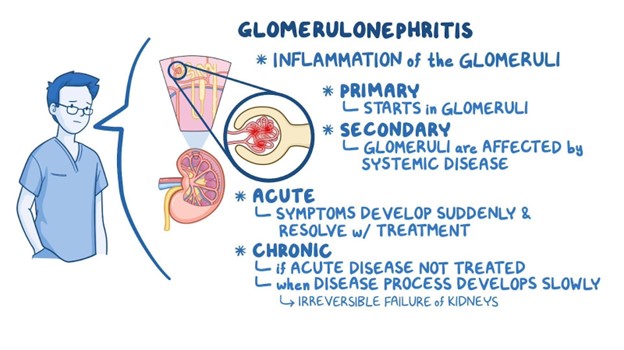The follow questions refer to the patient described below:
A 9 yr. old child with both hydrocephalus and a cardiac defect weighs 55 pounds. He requires digoxin by mouth once daily, the dose should be held if there are any symptoms of toxicity.
Pediatric maintenance dose is 5 mcg/kg daily given as a single dose. After listening to the apical rate for one full minute, you note it is only 50. Should you administer the digoxin as ordered?
NO
Just administer it without checking
instruct mom to give it
Yes
The Correct Answer is A
Digoxin is a medication commonly used to treat certain heart conditions, including some congenital heart defects. It's important to monitor the heart rate and other signs of toxicity when administering digoxin, especially in pediatric patients. Let's break down the information given:
The pediatric maintenance dose of digoxin is 5 mcg/kg daily.
The child weighs 55 pounds (approximately 25 kg).
Given these values, the total daily dose for this child would be:
Total daily dose = 5 mcg/kg × 25 kg = 125 mcg
This total daily dose is usually given as a single dose. However, the child's heart rate is noted to be only 50 beats per minute (bpm). A heart rate of 50 bpm in a child could potentially indicate bradycardia (slow heart rate), which can be a sign of digoxin toxicity. Bradycardia is a known adverse effect of digoxin, and it's important to assess for other signs of toxicity as well, such as nausea, vomiting, and changes in color vision.
In this case, it would be prudent to withhold the digoxin and assess the child further for signs of toxicity or bradycardia. The dose should not be administered until the healthcare provider is consulted and appropriate action is determined.
So, the correct answer is indeed NO. Administering the digoxin without considering the slow heart rate and the potential for toxicity could be unsafe for the child.
Nursing Test Bank
Naxlex Comprehensive Predictor Exams
Related Questions
Correct Answer is D
Explanation
A) Absence of proteinuria:
Chronic glomerulonephritis often involves damage to the glomeruli in the kidneys, which can lead to the leakage of protein into the urine, resulting in proteinuria. The absence of proteinuria would be an unexpected finding in a patient with chronic glomerulonephritis. Therefore, this choice is incorrect.
B) Serum phosphorus 4.0 mg/dL (within expected reference range):
Serum phosphorus levels within the expected reference range are not directly related to chronic glomerulonephritis. While abnormalities in electrolyte levels might occur due to kidney dysfunction, serum phosphorus within the normal range is not a hallmark finding of glomerulonephritis. Therefore, this choice is incorrect.
C) Serum potassium 3.8 mEq/L (within the expected reference range):
Similar to serum phosphorus, serum potassium levels within the normal range are not specific to chronic glomerulonephritis. Kidney dysfunction can indeed affect electrolyte levels, but a serum potassium level within the normal range doesn't provide specific information about glomerulonephritis. Therefore, this choice is incorrect.
D) BUN 50 mg/dL (elevated):
Blood Urea Nitrogen (BUN) is a waste product that is filtered by the kidneys. Elevated BUN levels indicate impaired kidney function, as the kidneys are less efficient at filtering and excreting waste products. Chronic glomerulonephritis can lead to progressive kidney damage, which can result in elevated BUN levels due to decreased filtration and clearance. Therefore, an elevated BUN level is an expected finding in a patient with chronic glomerulonephritis.

Correct Answer is D
Explanation
A) Kidneys are very small and irregular.
Explanation: This statement is not the primary reason for instructing caregivers about preventing kidney injury in babies or children under 2 years old. While it is true that infant and toddler kidneys are relatively smaller and have a slightly different shape compared to adult kidneys, the main concern for kidney injury prevention in this age group is related to other factors.
B) The occurrence of Hirsutism.
Explanation: Hirsutism refers to excessive hair growth, typically in a male pattern, in women and children. It is not directly related to kidney injury prevention in babies or children under 2 years old. Hirsutism is usually caused by hormonal imbalances and is not a primary consideration when instructing caregivers about preventing kidney injury.
C) Diaper rashes.
Explanation: Diaper rashes are skin irritations that occur in the diaper area of infants and young children. While diaper rashes can be uncomfortable and require proper care, they are not a major concern when instructing caregivers about preventing kidney injury. Diaper rashes are typically a result of prolonged exposure to moisture and can be managed with good hygiene practices and appropriate diaper-changing routines.
D) Children under two years old are more vulnerable to kidney trauma from compression force to abdomen.
Explanation: This statement is true and is the main reason for instructing caregivers about preventing kidney injury in babies or children under 2 years old. Children in this age group have relatively larger abdomens and less developed abdominal muscles, which makes their kidneys more susceptible to injury from compression forces to the abdomen. This is why caregivers are advised to handle young children carefully, avoid rough play, and ensure that they are securely fastened in car seats and other safety devices to prevent potential kidney trauma.
Whether you are a student looking to ace your exams or a practicing nurse seeking to enhance your expertise , our nursing education contents will empower you with the confidence and competence to make a difference in the lives of patients and become a respected leader in the healthcare field.
Visit Naxlex, invest in your future and unlock endless possibilities with our unparalleled nursing education contents today
Report Wrong Answer on the Current Question
Do you disagree with the answer? If yes, what is your expected answer? Explain.
Kindly be descriptive with the issue you are facing.
